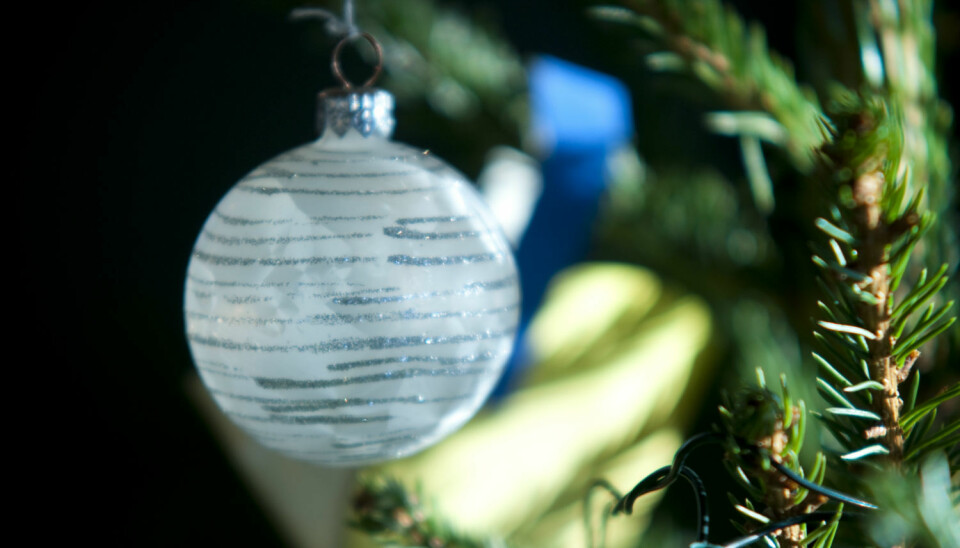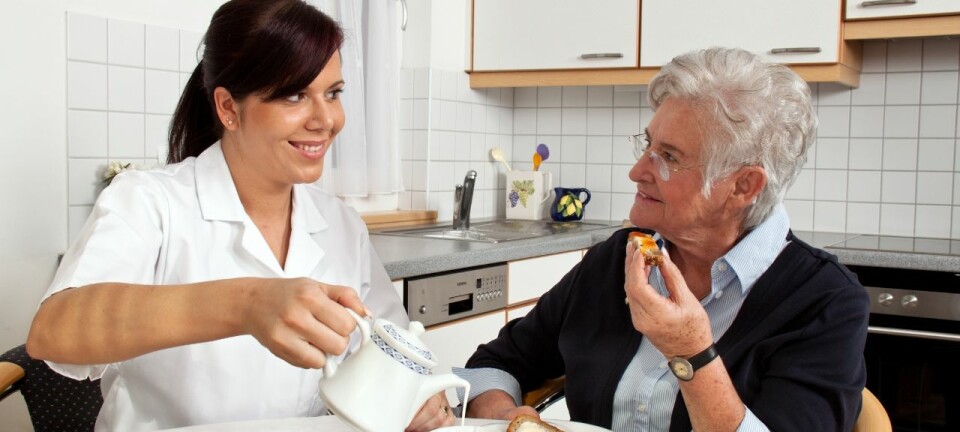
OPINION: The Christmas tree's carbon footprint
Trees store carbon dioxide. How bad is it really to chop down a spruce tree and put it in the living room for Christmas?
Every year 1.9 million Christmas trees, mostly spruce and pine, are chopped down and brought from the forest into Norwegian living rooms.
For many, the spruce tree is not associated with anything particularly positive in a purely aesthetic sense. Useful, alright... but beautiful?
The impenetrable groves of the West-Norwegian Sitka Spruce stands are a constant source of infuriation to hikers, and in eastern parts of the country many find the spruce forests dark and gloomy.
Conversely, designers of black metal cover art find old spruce forests essential for music’s bleak and mythical image: Dark, raw, and useful.
But Christmas time changes everything for Norwegian spruce trees. They are taken inside from the depths of the forest and decorated in our living rooms. During Christmas, the spruce tree becomes an important symbol of the holidays, and for a fleeting moment the coniferous gymnoped is seen by many as the most beautiful tree of the forest.
Spruce tree CO2-treatment plant
Did you know that the spruce tree you put in your living room is also a CO2 treatment plant? That the tree is nature’s own carbon accumulator?
We derive great pleasure from Christmas trees during Christmas, but the real usefulness of spruce trees is provided by the over 3 billion spruce trees covering Norway, from the north to south.
The spruce tree is Norway’s most common forest tree, and forms the basis for an industry that, in the year 2011, had over NOK 42 billion in revenues.
Throughout the year, during long and cold winter nights, on hot and dry summer days, spruce trees stand firm, breathing in and breathing out, and, with the help of CO2 in the atmosphere, slowly but surely build up ever-larger carbon stores.
To see the forest for the trees

Norway's national forest inventory has been measuring the country’s forests since 1919.
Because of the Norwegian Forest and Landscape Institute’s national forest inventory we know how many trees there are in Norway (around 11 billion), where they are located and how fast they grow.
And when we know how large they are, we know approximately how much CO2 they have taken up from the atmosphere.
Over the course of a summer, spruce trees will tie up approximately as much CO2 as Norway’s road traffic spews out during one year.
What then of the Christmas trees? Is it right for us to chop down these future carbon stores, take them inside for a few short days of Christmas, and then throw them out or burn them?
Would it be possible to reduce the accumulation of CO2 in the atmosphere if we replaced the living, breathing Christmas spruce with a plastic equivalent, produced in China?
Let’s take a closer look under the tree.
A ton saved for every tree
According to the Forest and Landscape Institute’s guide to Christmas trees, the market value of Christmas trees in Norway is NOK 675 million.
Christmas tree and greenery experts estimate that Norwegians chop down around 400 000 trees on their own, to use themselves or give to friends and family, and that approximately 1.5 million Christmas trees are sold commercially. This means that around 1.9 million trees end up in Norwegian living rooms every Christmas.
How much CO2 would the Christmas trees tie up if we left the next 20 years of Christmas trees untouched until they reached logging age, for exampel?
We would be talking about 38 million trees. The match weight of a mature spruce with trunk, branches, needles and roots is around 500 kg, excluding the water in the wood.
Half of this dry weight is comprised of carbon (the "C” in “CO2”). The amount of carbon dioxide that the tree has tied up in the timber is approx. 1.8 times its dry weight. This means that a mature spruce has tied up 0.9 tons of CO2 from the atmosphere via the photosynthesis of the tree’s needles.
The Christmas tree that you don’t bring into your living room in 2014 could, over the course of the next 80 years, until it reaches logging age, tie up nearly a ton of CO2 from the atmosphere.
Eight generations at the same time
Maybe a ton of CO2 doesn’t sound like much. The average family car releases two to three times that amount during one year of driving.
But could the sum of all the trees we don’t use for Christmass purposes add up to a reasonable amount of CO2? The answer is: Maybe. 38 million mature ex-Christmas trees would have tied up a combined amount of 40 million tons of CO2 over the course of 80 years.
That is approximately the same amount of CO2 that Norway releases during a year. Besides, it’s not like a chopped down Christmas tree leaves a hole in the forest for all those years.
A Christmas tree grower would be able to have eight generations of Christmas trees during an 80 year period. Moreover, plastic trees consume CO2 during production and transport.
So maybe there's not too much to gain from choosing a plastic shrub instead of bringing home a fragrant Christmas tree.
We can rejoice over the Christmas tree that we drag into the living room and decorate, while also granting a friendly thought to the Christmas trees’ siblings, left in the woods.
Because while 1.9 million spruces become Christmas trees, more than 25 million trees are planted every year in Norway, with the purpose of growing large.
They stand there, binding CO2 from the atmosphere through the photosynthesis of their needles, and performing important work for us, both through tying up carbon, and by providing the raw material for an important industry.


































